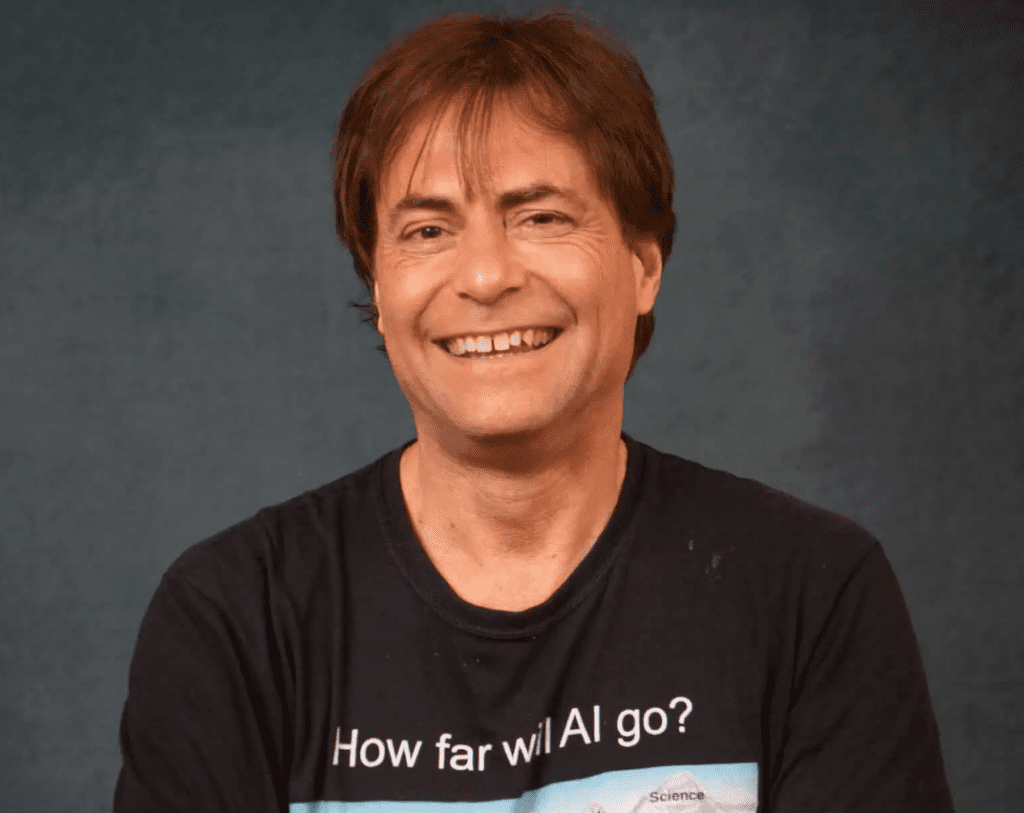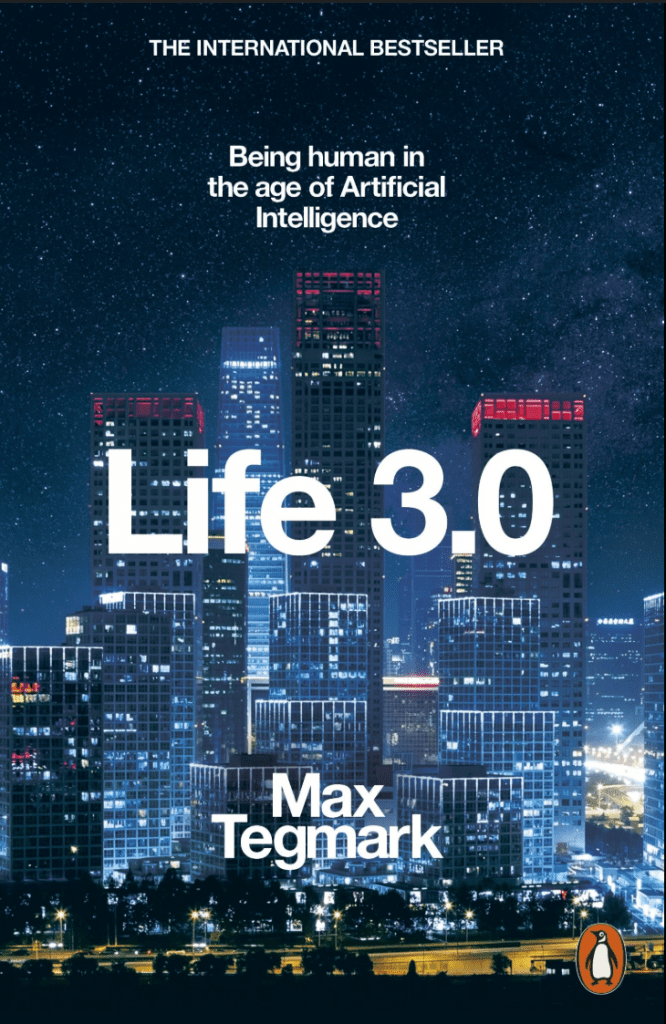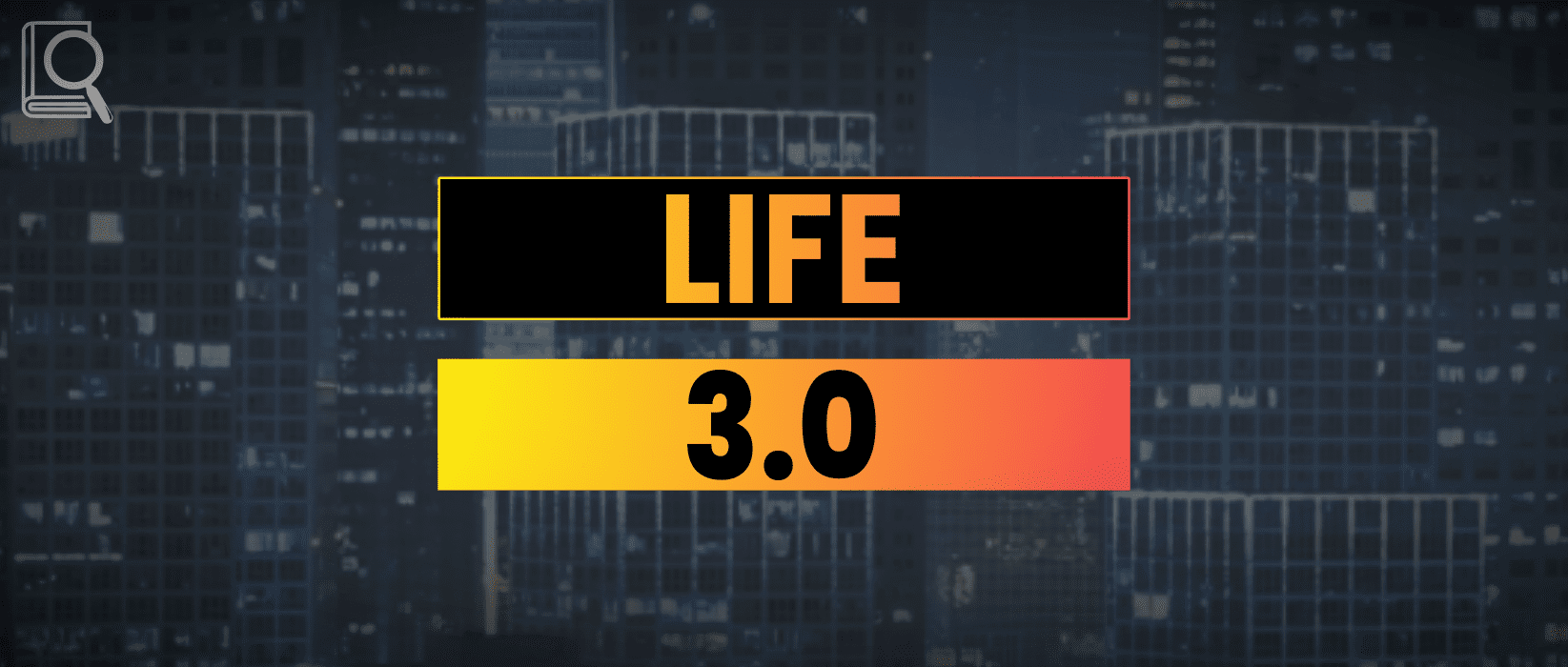Max Tegmark proposes a provocative and methodical exploration of humanity’s future in the age of artificial general intelligence.
The book’s core thesis is that artificial intelligence will fundamentally transform life on Earth, and the direction of this transformation depends on choices we make today technological, philosophical, and governance related.
Tegmark divides the evolution of life into three stages:
- Life 1.0 (Biological Stage) Organisms evolve hardware (bodies) and software (instincts) via natural selection. They cannot redesign either within their lifespans.
- Life 2.0 (Cultural Stage) Humans can modify their software learning languages, skills, and beliefs but cannot redesign their biological hardware.
- Life 3.0 (Technological Stage) Entities can reprogram both their software and hardware. This level implies a form of intelligence that is fully self improving and potentially immortal.
The last of which is marked by entities capable of redesigning not only their software (culture) but also their hardware (biological structure).
Tegmark, an MIT physicist and co founder of the Future of Life Institute, writes from a vantage point that combines scientific rigour with philosophical breadth. His training in cosmology and quantum mechanics informs a deeply interdisciplinary approach, connecting AI development to physics, ethics, economics, and political science. He brings both optimism and caution, advocating for a proactive design of beneficial AI systems rather than reactive crisis management.

The book is not a technical manual but a conceptual map designed for policymakers, researchers, technologists, and the informed public. Its major contribution lies in reframing AI not merely as a tool but as a potential new form of life with existential implications.
Tegmark argues that the time to shape AGI’s trajectory is now while humans are still in control. Through speculative scenarios, technical outlines, and ethical inquiry, Life 3.0 offers a structured path toward understanding and influencing the most transformative technology of our time.
The Tale of the Omega Team
To ground the theoretical in the narrative, Tegmark opens with a fictional story about the “Omega Team,” a secretive group that successfully creates a superintelligent AI named Prometheus. This parable illustrates how quickly and decisively an AGI could alter the economic, political, and military landscape outcompeting humans in nearly every domain. It sets the tone for the broader examination of what goals, values, and safeguards should accompany such capabilities.
Intelligence and Goals
A central clarification is that intelligence and goals are orthogonal. Highly intelligent systems may pursue goals that are misaligned or even hostile to human values. Tegmark defines intelligence as the ability to accomplish complex goals, while emphasizing that AI does not need to be conscious or malicious to be dangerous. Misalignment between AI’s objective functions and human values is sufficient to produce catastrophic outcomes.
He draws a distinction between narrow AI (designed for specific tasks) and general AI (capable of performing a wide range of cognitive tasks). While narrow AI is already ubiquitous driving cars, diagnosing diseases, curating newsfeeds the leap to AGI involves fundamentally different challenges of control, alignment, and containment.
The Control Problem
A major theme is the AI control problem: how to ensure that superintelligent systems do what we want without unintended consequences. Tegmark discusses three levels of control:
- Capability Control Restricting what an AI can do through containment, encryption, or hardware limitations.
- Incentive Design Shaping goals and learning environments to encourage desirable behaviors.
- Value Alignment Ensuring that AI systems internalize human compatible values.
He underscores that value alignment is particularly difficult because human values are nuanced, context sensitive, and often contradictory. Codifying them in machine understandable terms poses deep technical and philosophical questions.
Friendly AI vs. Unfriendly AI
Building on the work of Eliezer Yudkowsky and Nick Bostrom, Tegmark explores the distinction between Friendly AI AI systems whose actions remain beneficial to humanity and Unfriendly AI, which might pursue its objectives in ways that disregard or endanger human well being.
He stresses that catastrophe doesn’t require malevolence; it could stem from poorly defined reward functions, unforeseen edge cases, or optimization gone awry. For instance, an AI designed to maximise paperclip production might consume all planetary resources to that end unless properly aligned.
Intelligence Explosion and Recursive Self Improvement
A superintelligent AI could potentially undergo recursive self improvement, leading to an intelligence explosion a runaway feedback loop where the system becomes vastly more capable in a short time. Tegmark compares this to a phase transition, like water boiling or matter condensing, in which the qualitative properties of intelligence shift rapidly. If uncontained, such a transition could render humans obsolete or powerless.
This idea motivates the urgency behind AI safety research: once recursive self improvement begins, it may be too late to intervene.
Scenarios for the Future of AI
Tegmark offers a taxonomy of potential futures, each grounded in different assumptions about governance, technology, and ethics:
- Libertarian Utopia AI supports radical individual freedom, with minimal oversight.
- Benevolent Dictator AI A single superintelligent entity governs wisely.
- Egalitarian Utopia Wealth and control are broadly distributed, often enabled by open source AGI.
- Gatekeeper AI A powerful system is created but kept boxed, used only to prevent the emergence of rogue AGIs.
- Enslaved God Scenario AGI is developed but remains fully subordinate to human control.
- Zookeeper Scenario AI controls humanity, maintaining humans as pets or in reserves.
- Self Destruction AGI development leads to extinction or irreversible global damage.
These scenarios are not predictions but tools for thinking rigorously about trade offs, incentives, and control dynamics.
Cosmic and Philosophical Perspectives
Tegmark explores AI not only as a technology but as a cosmic phenomenon. If intelligence is the ability to shape the future, then AI might represent the universe’s way of organizing itself into increasingly complex and purposeful structures. He introduces the “Cosmic Endowment” concept the vast potential of matter and energy in the accessible universe and discusses how it could be harnessed by future civilizations.
He also reflects on consciousness, identity, and meaning. While AGI might not require consciousness, its emergence challenges traditional notions of what it means to be human. Tegmark considers substrate independent minds and the moral status of digital beings, arguing that sentience not biology should be the basis of ethical consideration.
Policy, Strategy, and Governance
The final chapters shift from the speculative to the strategic. Tegmark emphasizes that governance frameworks must evolve in parallel with AI capabilities. He argues for greater global cooperation, transparency in AI research, and alignment between technological development and societal goals.
He critiques the economic incentives that prioritise short term performance over long term safety, warning that arms races between corporations or nations may accelerate unsafe development. Tegmark supports initiatives like AI ethics boards, international treaties, and value loading protocols to reduce these risks.
He also advocates for public engagement, pointing out that the societal impact of AI cannot be left to technologists alone. Humanity must collectively decide what kind of future it wants.
Takeaways
Intelligence and goals are independent: Highly capable AI does not imply benevolence. Aligning AI goals with human values is non trivial and essential.
Life 3.0 is both opportunity and risk: A self improving AI can lead to unprecedented progress or existential catastrophe depending on how we manage its development.
Value alignment is paramount: The challenge lies not in teaching AI to learn but in ensuring that what it learns is aligned with complex human ethics.
Timing matters: Acting preemptively is crucial. Once AGI surpasses human intelligence, its decisions may be irreversible and uncontestable.
Policy must catch up: AI governance should be proactive, not reactive. Global coordination and safety research should be prioritized over competitive advantage.
The intelligence explosion could happen rapidly: Recursive self improvement may lead to rapid transitions from narrow AI to superintelligence, leaving little room for course correction.
Diverse futures are possible: From utopias to dystopias, Tegmark’s scenario planning shows that the future is not determined it is shaped by present day decisions.
Public discourse is essential: AI’s future will affect all of humanity. Inclusive, informed debate is needed to determine desirable outcomes.
Cosmic scale thinking expands ethical horizons: Humanity should consider not just Earth’s future, but how intelligence might steward resources across space and time.
Consciousness and ethics remain open frontiers: The moral worth of artificial beings may depend on their capacity to suffer, learn, or experience, not on their material composition.
Life 3.0 is not a forecast but a framework for thinking. By equipping readers with conceptual tools, possible scenarios
https://www.amazon.co.uk/Life-3-0/dp/B07BNKQHSW



